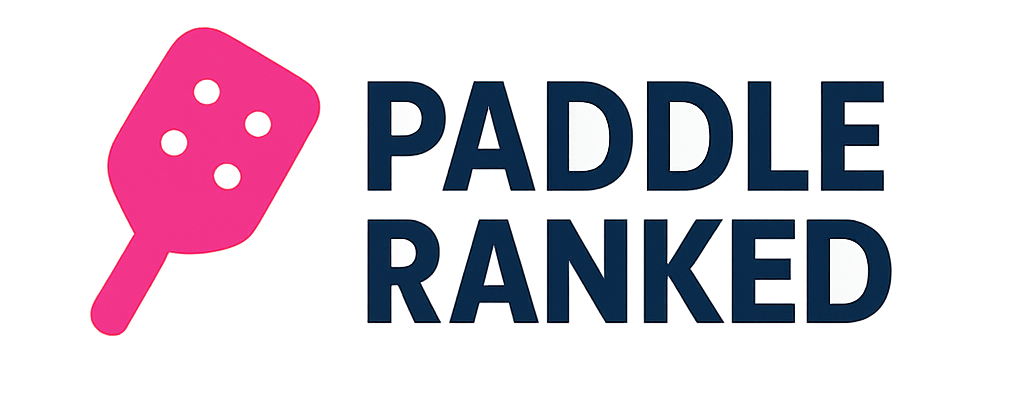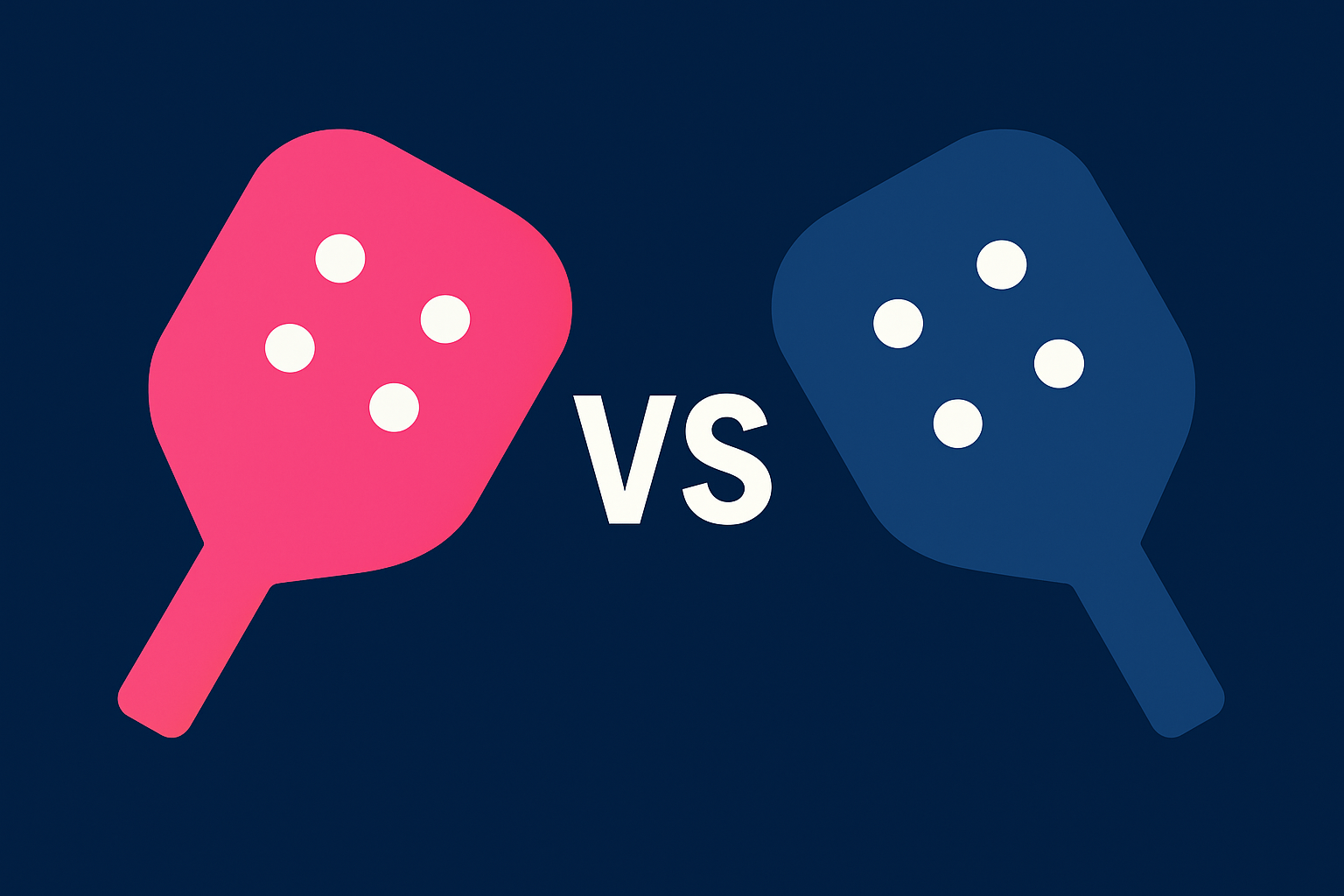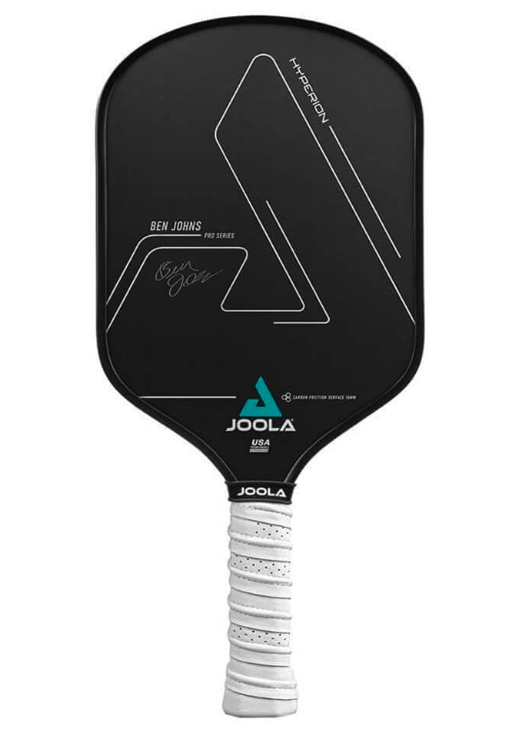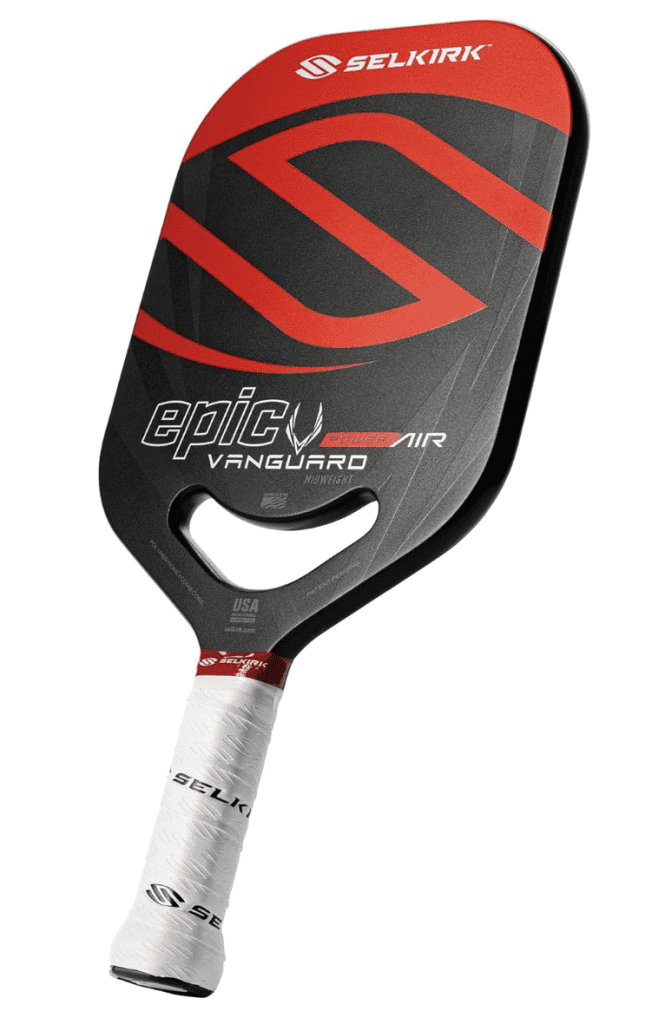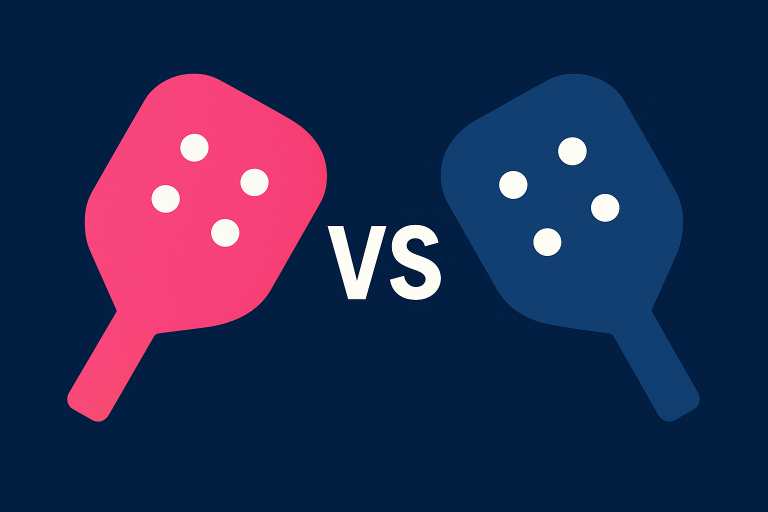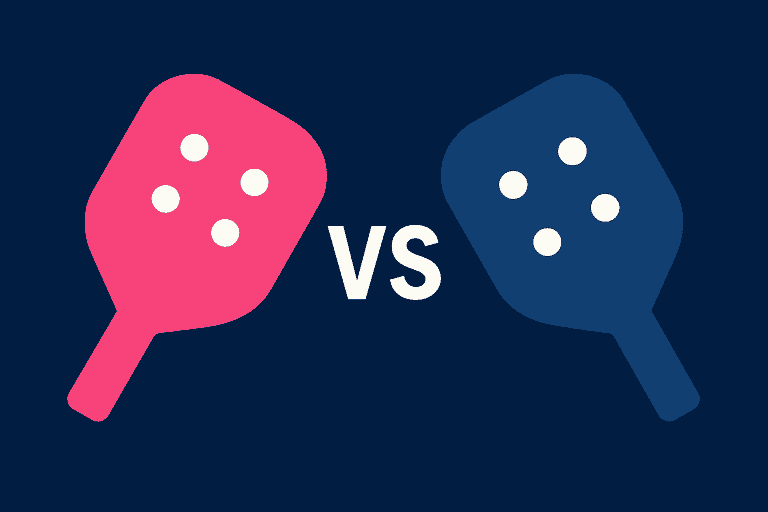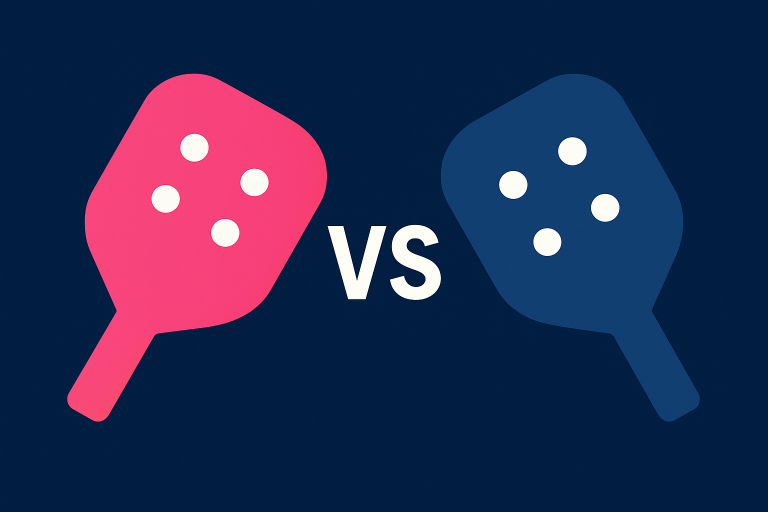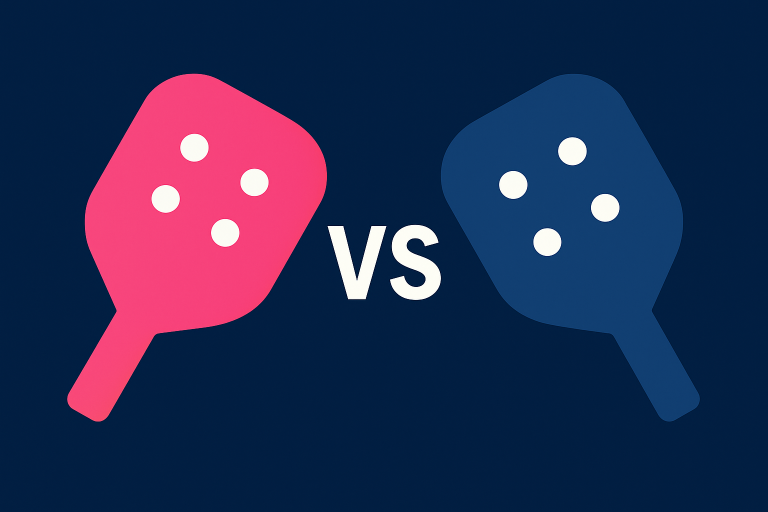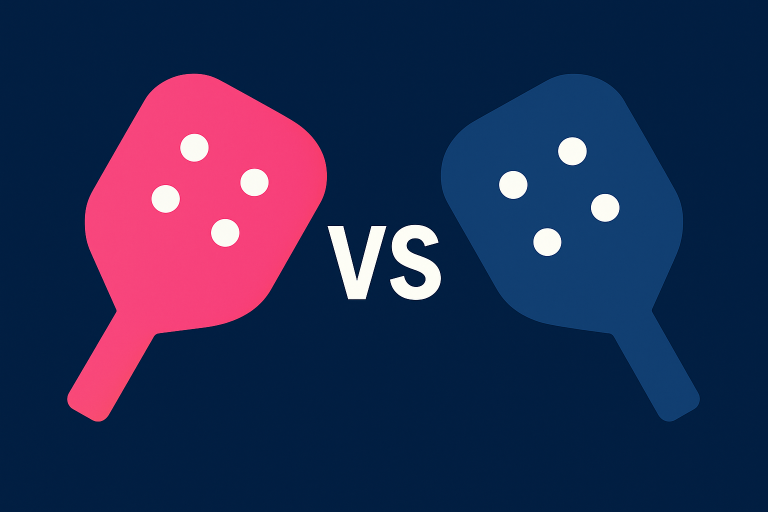JOOLA Ben Johns Hyperion vs Selkirk Power Air Epic — Pro Flagships Compared (2025)
Updated August 2025
Two paddles you’ll see in the hands of serious players right now: the JOOLA Ben Johns Hyperion 16 and the Selkirk Power Air Epic. Both carry big reputations and very different personalities. One leans into raw carbon grip and counterpunching stability. The other feels like a rocket with a steering wheel, built to jump on serve, drive, and speed ups without feeling clunky.
If you’re deciding between them, the real question isn’t “which is better,” but “which matches how you win points.” Below, I’ll break down design, feel, power, spin, control, and who each paddle suits best, so you can pick with confidence.
Snapshot: what sets them apart
- Hyperion 16 plays like a spin-first control weapon. The raw carbon face grips the ball, the thicker 16 mm core calms the bounce, and the overall swingweight gives you rocksolid counters.
- Power Air Epic plays fast and explosive. The open throat frame and hybrid face add pop, while the head moves through the air easily for quick hand battles.
JOOLA Ben Johns Hyperion 16 — the spin steady counterpuncher
Design and build
Hyperion’s identity starts with its raw carbon face and 16 mm core. The face texture isn’t just cosmetic; it actually grips the ball, so you can shape topspin on drives and roll volleys without muscling everything. The thicker core, plus JOOLA’s solid perimeter treatment, keeps the face from wobbling on off center contact. That translates to stability when you’re blocking pace or redirecting counters.
On court feel
It’s a composed paddle. Drives feel heavy rather than “poppy.” Resets settle into the kitchen. When exchanges speed up, the face doesn’t flutter, there’s a planted quality that encourages you to stand your ground and counter back with shape.
Where it shines
- Heavy, trustworthy spin on drives, dips, and roll volleys
- Resets that don’t jump off the face
- Blocks and counters against big hitters
- Consistent feel over long sessions
Tradeoffs to know
- The higher swingweight isn’t “whippy.” If you rely on wristy flicks at the kitchen, you’ll need clean mechanics.
- Quick volleys take a beat to learn if you’re coming from a super light build.
Best for
Advanced baseliners, counterpunchers, and doubles players who build points with shape and want a thicker core safety net in the soft game.
Selkirk Power Air Epic — the quick strike attacker
Design and build
Selkirk’s QuadFlex hybrid face mixes carbon and fiberglass for a lively response. The open throat frame isn’t a gimmick; it reduces air drag and shifts mass so the paddle tracks faster. It’s still stable, just tuned to feel springier on contact than a thick raw carbon control paddle.
On court feel
The first swing tells you the story: serves jump, drives carry pace without a huge backswing, and the paddle whips through hand battles. There’s spin here, too, more than older fiberglass hybrids, but it’s the “easy offense” that stands out.
Where it shines
- Pop on serves, drives, and speed-ups
- Quick hands at the kitchen and rapid redirections
- Singles players who value first strike offense
- Players who prefer a faster, livelier face
Tradeoffs to know
- Touch shots require discipline; it’s easier to over-push drops until you soften your hands.
- Feel is crisper. If you’re rehabbing or ultra-sensitive to vibration, you may prefer thicker core damped paddles.
Best for
Aggressive servers and drivers, fast hands doubles players, and anyone who wants a paddle that feels lively without adding a bunch of weight.
Head to head: how they actually play
Power and drives
Edge: Power Air Epic. The hybrid face plus the quicker swing creates more “free” ball speed, especially on first drives and sitters. Hyperion can hit hard, it just asks for a fuller swing.
Spin potential
Edge: Hyperion 16. Raw carbon’s bite is the real deal. You’ll see heavier topspin on drives and more reliable dip on counters and roll volleys.
Control and soft game
Edge: Hyperion 16. The 16 mm core absorbs incoming pace, making resets and dinks easier to park short. Power Air is playable here, but less forgiving if your touch wanders.
Hand speed at the kitchen
Edge: Power Air Epic. The throat cutout and overall balance help the head fire through exchanges. If you win on speed-ups and hands, this is noticeable.
Stability on blocks and counters
Edge: Hyperion 16. That thicker core and beefier swingweight resist twisting. Against bangers, it feels like home base.
Comfort and feel
Slight edge: Hyperion 16. It’s more cushioned at impact. Power Air feels crisp and lively; some will love the feedback, others will prefer Hyperion’s calmer touch.
Learning curve
Hyperion: Mostly timing and swing path. Once settled, it’s a rock.
Power Air: Temper the soft game at first. Once you rein it in, the offense shows up every rally.
Which one should you buy?
Think about how you start points and how you end them.
- Choose Hyperion 16 if your game leans on heavy spin, shape, and countering pace, and if you value reset reliability more than “instant pop.”
- Choose Power Air Epic if you want serves and drives to jump without extra effort and you love picking fights at the kitchen with quick hands.
When you’re ready to pull the trigger, grab your preferred weight range (Hyperion feels best for most players around the middle of its spec; Power Air rewards staying light for hand speed). If you like Hyperion but want a snappier feel, JOOLA’s Perseus is a natural cross-shop. If you like Power Air but want more plush control, peek at Selkirk’s Vanguard Control line.
Winner by playstyle
| Playstyle | Pick |
|---|---|
| Spin heavy baseliner and counterpuncher | JOOLA Ben Johns Hyperion 16 |
| Aggressive server/driver and fast-hands attacker | Selkirk Power Air Epic |
| Control first doubles player (resets > rockets) | JOOLA Ben Johns Hyperion 16 |
| Singles player who wants first strike offense | Selkirk Power Air Epic |
Translation: if you earn points by bending the ball and out stabilizing opponents, Hyperion fits like a tailored suit. If you prefer to set the tone with pace and win the hands battle, Power Air feels tailor made.
FAQ — JOOLA Hyperion vs Selkirk Power Air Epic
Which has more power?
Power Air Epic. The hybrid face and faster head speed give it more pop on serves and drives with less backswing.
Which generates more spin?
Hyperion 16. The raw carbon face grips the ball longer, producing heavy topspin and reliable dip.
Which is better for doubles?
Which swings faster at the net?
Power Air Epic. The open throat design and balance make it easier to accelerate in hand to hand exchanges.
Which is more beginner friendly?
Do pros actually use these?
Yes. Ben Johns plays the Hyperion line. Selkirk’s Power Air shows up across pro brackets and high-level rec play.
Which one lasts longer?
Both are premium builds. Raw carbon faces (Hyperion) tend to hold spin when cleaned regularly; hybrid faces (Power Air) keep their pop well and resist UV heat cycles outdoors. Avoid leaving either in a hot car.
Will Hyperion feel too heavy for me?
If you’re coming from a super light paddle, the swingweight will feel more substantial. Give it a few sessions, many players end up appreciating the stability on blocks and counters.
Is the Power Air too lively for touch shots?
It can be at first. Most players adjust by softening grip pressure and focusing on contact in front. Once dialed, you get touch with offense on tap.
